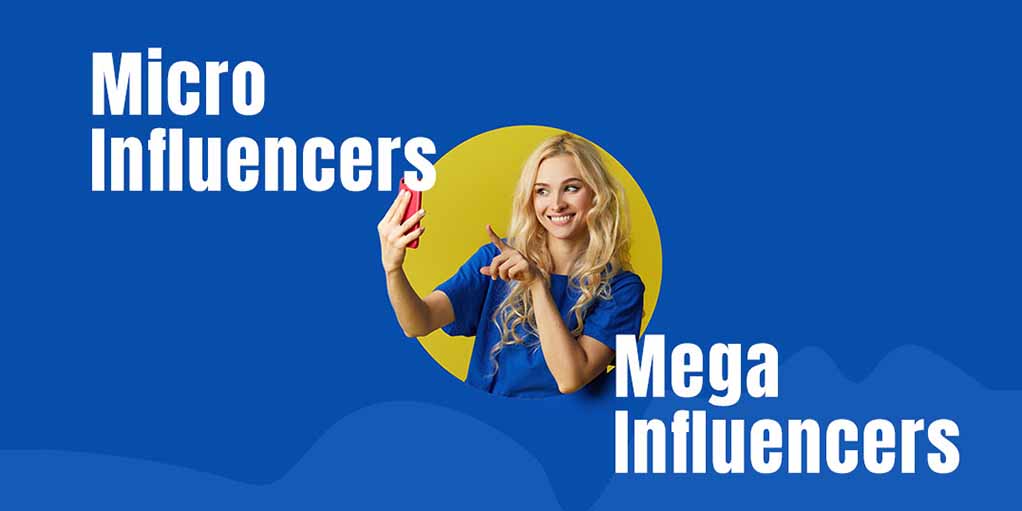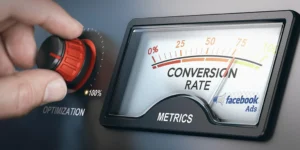Introduction
In the ever-evolving world of digital marketing, influencer collaborations have become a key strategy for brands aiming to connect with their target audiences. However, one crucial decision marketers face is choosing between micro-influencers and mega-influencers. Each type of influencer offers unique benefits, making understanding their differences essential and determining which best aligns with your brand’s goals.
This blog explores the key distinctions between micro-influencers and mega-influencers, their advantages and disadvantages, and how businesses can make an informed choice for optimal marketing impact.
Understanding Micro-Influencers and Mega-Influencers
Micro-Influencers
Micro-influencers typically have a follower count ranging from 10,000 to 100,000. They are known for their niche expertise, high engagement rates, and close-knit communities. These influencers focus on specific topics such as beauty, fitness, fashion, technology, or food and often have a strong bond with their audience.
Mega-Influencers
On the other hand, mega-influencers boast a follower count of over 1 million. They are often celebrities, high-profile social media personalities, or well-known public figures. Their reach extends to vast and diverse audiences, making them ideal for large-scale brand awareness campaigns.
Pros and Cons of Micro-Influencers
Pros:
- Higher Engagement Rates: Micro-influencers have more personal connections with their followers, leading to higher engagement in likes, comments, and shares.
- Cost-Effective: They charge significantly lower fees than mega-influencers, making them an affordable option for small and medium-sized businesses.
- Niche Audience: Their targeted content allows brands to connect with specific, interested demographics rather than a broad, generalized audience.
- Authenticity and Trust: Followers perceive micro-influencers as relatable and trustworthy, making their recommendations more credible.
- Better ROI: Due to their high engagement and niche targeting, micro-influencers often deliver better conversion rates than mega-influencers.
Cons:
- Limited Reach: Their follower count is significantly lower than mega-influencers, which may limit brand exposure on a larger scale.
- Time-Consuming: Working with multiple micro-influencers to achieve widespread brand visibility can require extensive coordination and effort.
- Less Immediate Impact: Unlike mega-influencers, they may take longer to create significant brand awareness.
Pros and Cons of Mega-Influencers
Pros:
- Massive Reach: Mega-influencers provide vast exposure, making them ideal for brands seeking global recognition.
- Instant Brand Awareness: Their high visibility ensures quick brand recognition and can significantly impact a brand’s perception.
- Strong Social Proof: Association with a well-known influencer enhances brand credibility and appeal.
- One-Time Campaigns: A single post from a mega-influencer can generate millions of impressions, making it efficient for large-scale promotions.
Cons:
- Lower Engagement Rates: Despite their extensive reach, mega-influencers often have lower engagement rates than micro-influencers.
- High Costs: Collaborating with mega-influencers requires a substantial budget, which may not be feasible for smaller brands.
- Less Personal Connection: Their recommendations may feel more commercial and less authentic, reducing their impact on consumer trust.
- Risk of Audience Mismatch: Their followers may not always align with a brand’s target demographic since they appeal to a broad audience.
Factors to Consider When Choosing Between Micro-Influencers and Mega-Influencers
1. Marketing Goals
- If your goal is brand awareness, a mega-influencer can quickly put your brand in front of millions.
- If your goal is high engagement and conversions, micro-influencers are the better choice due to their strong audience relationships.
2. Budget
- Businesses with a limited marketing budget may benefit more from micro-influencer collaborations.
- If budget is not a constraint, mega-influencers can provide extensive reach and exposure in a shorter timeframe.
3. Target Audience
- If your brand caters to a specific niche, micro-influencers are ideal due to their concentrated audience.
- A mega-influencer’s reach can help you achieve mass appeal if you aim to target a broad audience.
4. Campaign Type
- Product launches and large-scale promotions work best with mega-influencers.
- Community-driven marketing and long-term partnerships perform better with micro-influencers.
5. Brand Authenticity
- Micro-influencers are the better option if authenticity and trust are critical to your brand.
- If brand prestige and mass exposure are the priorities, mega-influencers can be more effective.
Case Studies: Success Stories
Micro-Influencer Success Story: Glossier
Glossier, a beauty brand, leveraged micro-influencers to build a strong community-driven marketing strategy. By working with niche beauty bloggers and everyday consumers, they established credibility and drove high engagement, contributing to their rapid success.
Mega-Influencer Success Story: Nike
Nike collaborates with celebrities and sports icons like Cristiano Ronaldo and Serena Williams to amplify brand awareness. Their campaigns reach millions, solidifying their status as a global leader in the sports apparel industry.
Conclusion: Which Is Better for Your Brand?
There is no one-size-fits-all answer to whether micro-influencers or mega-influencers are better for your brand. The right choice depends on your brand’s goals, budget, and target audience.
- If you seek authentic engagement, niche targeting, and cost-effective marketing, micro-influencers are the ideal option.
- If your priority is mass exposure, rapid brand awareness, and high-profile endorsements, mega-influencers are the better choice.
Sometimes, a hybrid approach combining both influencer types can yield the best results. By leveraging the strengths of micro- and mega-influencers, brands can create impactful marketing strategies that drive engagement, trust, and visibility in the digital space.
To learn more or to acquire our services, please contact us at https://paypercampaign.com





